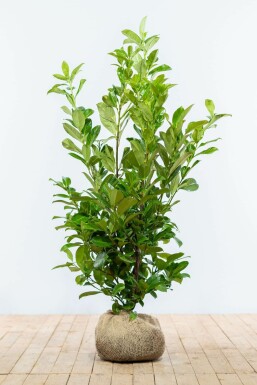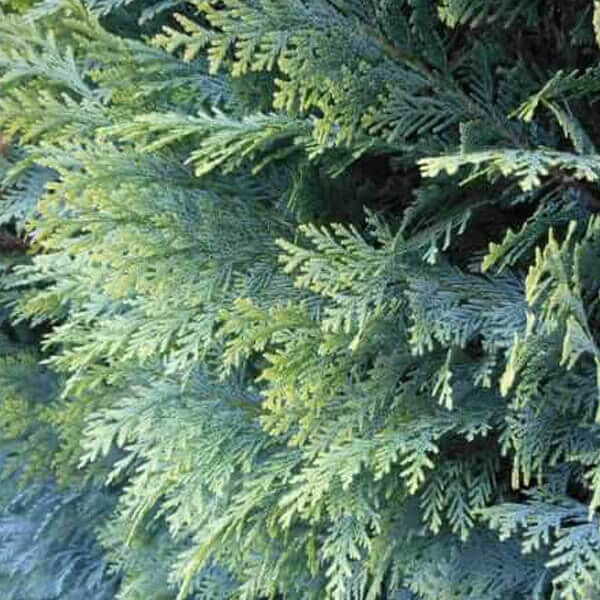Native Hedge Plants For Wildlife Gardens
Native Hedge Plants For Wildlife Gardens
Blog Article
Hedge Plants For Sandy Soil
Improve your garden's attraction with lush hedge ranges such as Yew (Taxus), Thuja, Laurel, Photinia, and Bamboo, celebrated for their structural stability and ecological benefits.
Yew and Thuja supply evergreen coverage and winter strength, while Laurel offers fast development and broad, fragrant leaves.
Photinia includes seasonal charm with its vibrant red foliage, and Bamboo provides a low-maintenance, tranquil ambiance.
These hedges improve air quality, lower noise, and produce tranquil, personal areas.
Proper planting, spacing, and maintenance ensure vigorous development and eco-friendly harmony.
Explore how these rich ranges can raise your garden's beauty and well-being.
Secret Takeaways
Change Your Garden With Lush Hedge Ranges
- Select Yew for its thick, evergreen growth and unrivaled durability.
- Go with Laurel for its fast growth and broad leaves, guaranteeing fast personal privacy.
- Pick Photinia for its lively seasonal foliage, which turns a striking dark red.
- Use Bamboo for a low-maintenance, winter-hardy hedge with visual appeal.
- Area plants 2-3 per meter and prune regularly for ideal growth and health.
Popular Hedge Plants
When transforming a garden with rich hedge ranges, it's important to think about popular hedge plants such as Yew, Thuja, Laurel, and Photinia due to their special attributes and advantages.
Yew (Taxus) is extremely respected for its durability and thick, green development, making it a prime option for withstanding landscapes.
Thuja is kept in mind for its evergreen foliage and robust winter resilience.
Photinia adds seasonal vibrancy with red leaves that darken in time, creating dynamic visual appeal.
Laurel uses quick development and fragrant, broad leaves, suitable for quick privacy.
In Addition, Bamboo is an excellent option for atmosphere, providing a low-maintenance, winter-hardy choice that enhances the garden's visual with its classy, swaying walking canes.
These selections cater to a range of horticultural requirements and preferences.
Benefits of Garden Hedges
Garden hedges use a plethora of advantages, making them an important addition to any landscape. These natural barriers are affordable to implement and supply considerable wind protection, boosting air flow and contributing to sound reduction. The dense foliage of hedges like Thuja and Beech guarantees privacy by blocking exposure, developing a tranquil and secluded environment.
Hedges also play a crucial function in microclimate regulation, supplying a stable environment that fosters plant development and reduces temperature variations. Their elaborate leaf structures filter toxins, improving air quality and adding to a healthier garden community.
Moreover, hedges master sound reduction, soaking up and deflecting sound waves to lower ambient sound levels. This double functionality of supplying both acoustic and visual personal privacy enhances the total tranquility and aesthetic appeal of any garden.
Planting and Upkeep Tips
For a successful hedge, precise preparation of the planting location is essential. Guarantee the soil has correct pH and drainage to support strong root development.
Area the plants appropriately for the chosen types. Water the hedge regularly during its initial development stage, changing as needed with seasonal changes.
Execute a organized bug control and disease prevention technique, utilizing natural or chemical treatments when required. Routinely examine for aphids, termites, and fungal infections.
Apply mulch to maintain wetness and suppress weeds. Seasonal pruning promotes dense growth and air flow, vital for plant health.
Following these standards will assist you cultivate a lively, well-maintained hedge that enhances the charm of your garden.
Spacing and Trimming Guidelines
Spacing and Cutting Standards
Correct spacing and cutting are vital for cultivating healthy, aesthetically appealing hedges. Appropriate spacing makes sure each plant gets enough nutrients, light, and air flow.
Follow these standards for ideal hedge upkeep:
- Spacing: Position hedge plants 2-3 plants per meter to motivate robust development.
- Pruning Methods: Regular pruning is vital for preserving preferred hedge height and shape. Trim new growth in summer season and cut down older wood throughout winter season.
- Seasonal Care: Adjust trimming methods and schedules according to seasonal requirements to make sure plant health.
- Hedge Height: Frequently display and cut to keep the desired hedge height and accomplish consistent looks.
Following these steps will guarantee your hedge grows, boosting both the appeal and performance of your garden.
Picking the Right Hedge
Picking the Right Hedge
Picking the appropriate hedge includes assessing factors such as fully grown height, foliage density, and environmental resilience. Successful hedge plant selection needs comprehending each species' development qualities and site-specific adaptability.
For instance, Yew (Taxus) provides excellent durability and dense development, while Thuja is noteworthy for its read more winter strength. Additionally, thinking about maintenance requirements is vital; fast-growing species like Laurel or Privet demand regular cutting, whereas low-maintenance choices like Bamboo or Ivy may be more suitable for those seeking very little upkeep.
Ecological elements such as soil type, light schedule, and moisture conditions must also direct the choice process. This cautious technique ensures the picked hedges will thrive, offering both functional and aesthetic advantages to the garden landscape.
Shipment and Planting Recommendations
To guarantee your hedge plants flourish, they must be provided by specialized couriers and planted quickly upon arrival.
Follow these necessary steps for successful planting:
- Soil Preparation: Enhance the soil with natural matter to enhance drain and nutrient content.
- Planting Depth: Produce a trench two times the width and equivalent to the depth of the root ball.
- Watering Strategies: Water thoroughly after planting, keeping the soil consistently damp however not filled.
- Mulching: Use a layer of mulch to retain wetness and reduce weeds.
Customer Support and Service
Given the important function of prompt help in horticultural pursuits, our consumer assistance team is available six days a week through telephone, email, and social media to offer professional recommendations and promptly resolve any issues. Their dedication to fast reaction times guarantees customer complete satisfaction by fixing queries related to plant health, optimum planting methods, and maintenance schedules.

Within 48 hours
This detailed support group, enhanced by an excellent 9.3/ 10 customer ranking, highlights our dedication to enhancing the gardening experience for every single client.
Regularly Asked Concerns
For How Long Does It Take for Hedge Plants to Establish?
Hedge plants generally need one to three years to end up being fully developed, with the exact duration differing by species and growing conditions.
Reliable care during this vital period is important for robust development. Consistent watering, watchful weed control, and proper fertilizer application are pivotal in promoting strong root advancement.
For instance, fast-growing species like Laurel might develop quicker, while slower-growing ranges such as Yew may take longer. Diligent maintenance speeds up the facility process, resulting in healthy and dense hedges.
What Are the Best Hedge Plants for Privacy?
The question of the best hedge plants for personal privacy includes evaluating evergreen and deciduous options.
Evergreen hedges like Thuja, Laurel, and Cypress provide year-round protection, guaranteeing constant privacy.
On the other hand, deciduous hedges such as Beech provide seasonal personal privacy, shedding leaves in colder months.
Secret maintenance tips for personal privacy hedges include routine trimming, fertilizing in spring, and appropriate spacing-- typically 2 to 3 plants per meter.
Furthermore, constant watering and persistent weed elimination are important for promoting healthy, dense development.
Can Hedge Plants Draw In Wildlife to My Garden?
Yes, hedge plants can attract wildlife to your garden by supplying important advantages like shelter, food, and nesting sites, thereby improving local biodiversity. For circumstances, yew, holly, and laurel are excellent for bring in birds, while ivy supports a variety of pests.
However, it's crucial to note that there are some disadvantages, such as increased maintenance to manage bugs and regular maintenance. Thoroughly choosing and keeping hedge varieties can help stabilize these downsides and benefits, ultimately cultivating a sustainable and dynamic environment in your garden.
Are There Any Flowering Hedge Plants Available?
Yes, there are flowering hedge plants readily available that can enhance the beauty of your garden.
For example, Elaeagnus, likewise understood as Olive Willow, produces fragrant white flowers in the fall, adding a touch of beauty.
Photinia, another popular option, showcases lively red leaves that mature into a rich green, producing a vibrant visual result throughout the seasons.
To ensure these plants prosper, it's vital to practice proper pruning techniques and seasonal maintenance, such as trimming brand-new development in the summer season and cutting down in the winter.
These measures will help maintain the health and aesthetic appeal of your flowering hedges.
How Do I Prevent Insects in My Hedge Plants?
To prevent insects in hedge plants, utilize natural insect control techniques and keep correct hedge care. Present helpful pests like ladybugs, which prey on damaging bugs, to produce a balanced community.
Routinely examine your hedges for signs of infestation and quickly get rid of any afflicted parts to avoid the spread. Guarantee the health of your hedges by applying balanced fertilizers and providing appropriate water.
Make use of mulching to maintain soil wetness and appropriate spacing to decrease plant stress and promote robust development. These practices jointly assist in reducing pest issues and keeping a healthy hedge.
Conclusion
In essence, selecting the best hedge varieties such as Yew, Thuja, and Laurel can change any garden into a relaxing haven. These plants provide year-round plant, improve aesthetic appeal, and offer useful advantages like sound decrease and wind defense.
Appropriate planting techniques, accurate spacing, constant watering, and seasonal cutting are crucial for ideal growth.
Trustworthy delivery services and expert consumer support make sure a smooth experience from purchase to planting, making it easier than ever to elevate your outdoor area.
Garden hedges offer a plethora of benefits, making them a valuable addition to any landscape. These natural barriers are economical to implement and offer considerable wind defense, improving air blood circulation and contributing to noise decrease. The thick foliage of hedges like Thuja and Beech ensures personal privacy by obstructing presence, creating a secluded and tranquil environment.

Pruning Strategies: Routine pruning is vital for maintaining desired hedge height and shape. Cut new growth in summer season and cut back older wood during winter.
Report this page